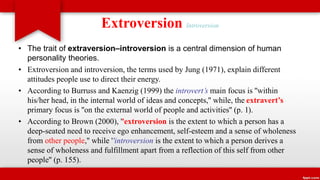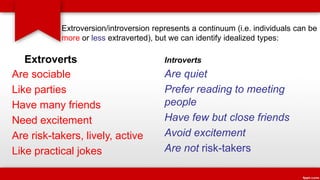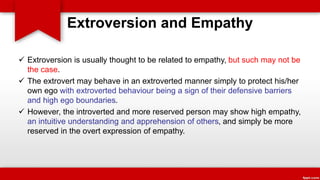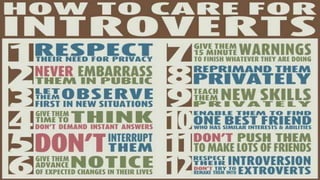This document discusses extroversion and introversion as dimensions of human personality. It defines extroversion as focusing energy on external stimuli like people and activities, while introversion focuses energy internally on ideas and concepts. Extroverts tend to be more social, active, and gain fulfillment from others, while introverts tend to be more quiet, prefer fewer close relationships, and gain fulfillment independently. The document also explores theories on how extroversion and introversion may impact second language acquisition and notes it is a continuum rather than an absolute distinction between people.





















![Social Attention Theory
• Yet another explanation of the high correlation between extraversion and
happiness comes from the study by Ashton, Lee, and Paunonen (2002).
• They suggested that the core element of extraversion is a tendency to
behave in ways that attract, hold, and enjoy social attention.
• They claimed that one of the fundamental qualities of social attention is its
potential of being rewarding. Therefore, if a person shows positive emotions
of enthusiasm, energy, and excitement, that person is seen favorably by
others and he or she gains others' attention. This favorable reaction from
others likely encourages extraverts to engage in further extraverted
behavior.[69]](https://image.slidesharecdn.com/extroversionintroversion-160206194022/85/Extroversion-introversion-22-320.jpg)



